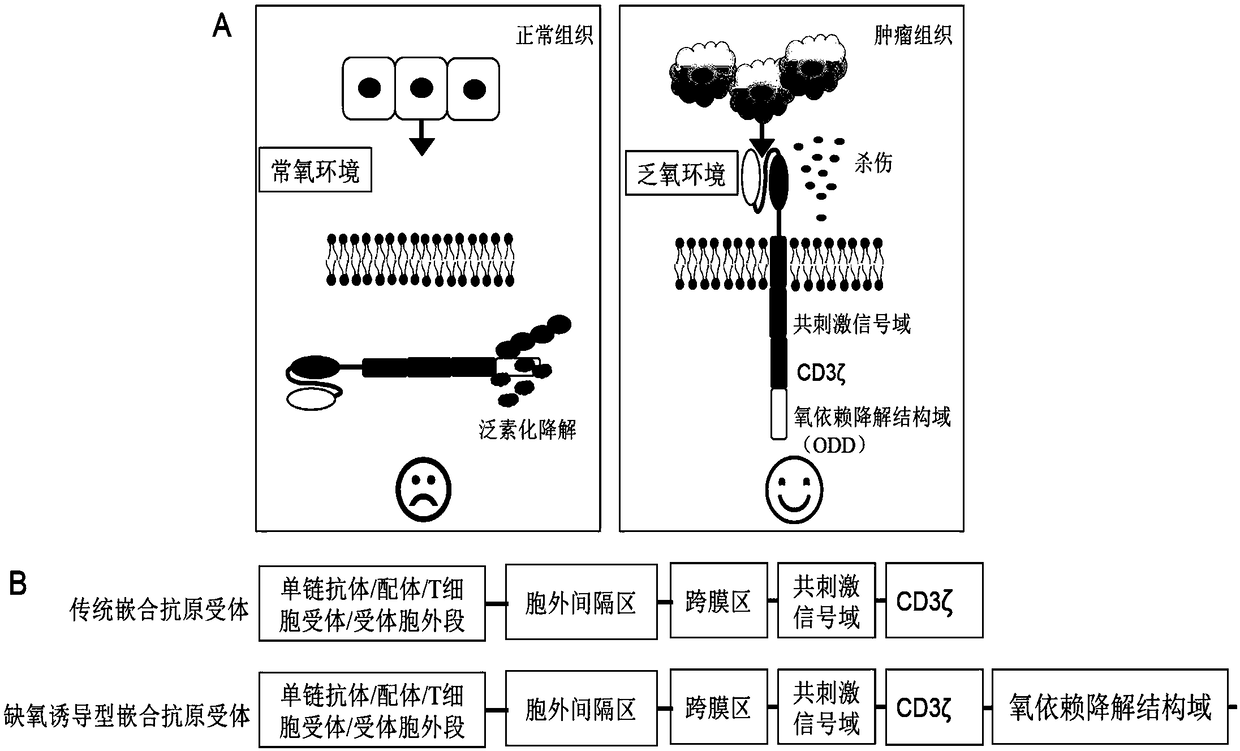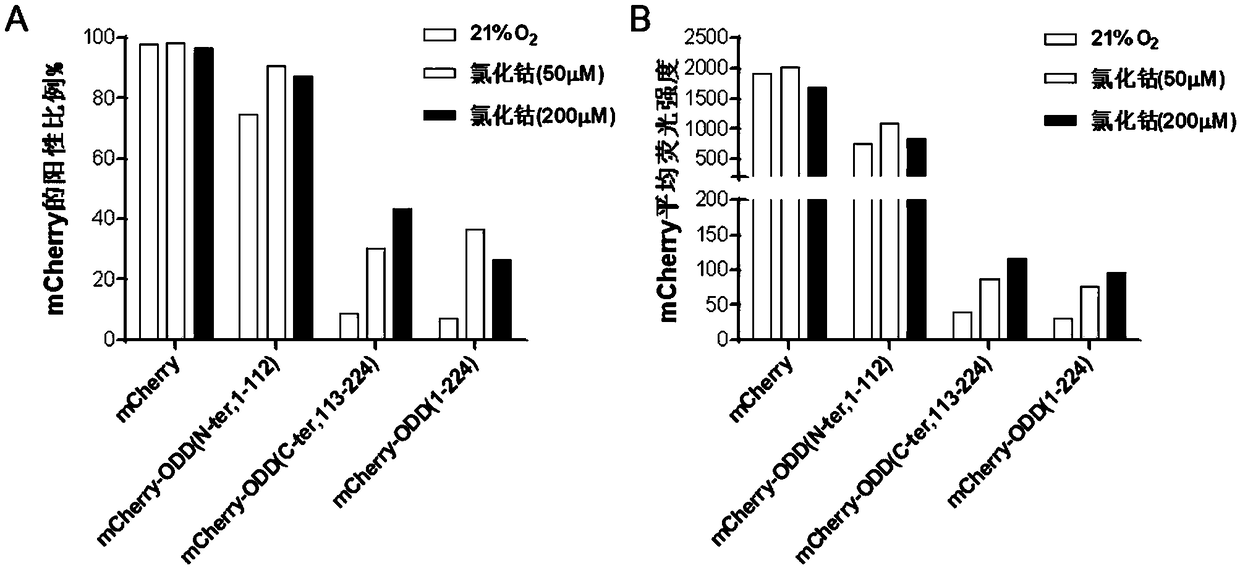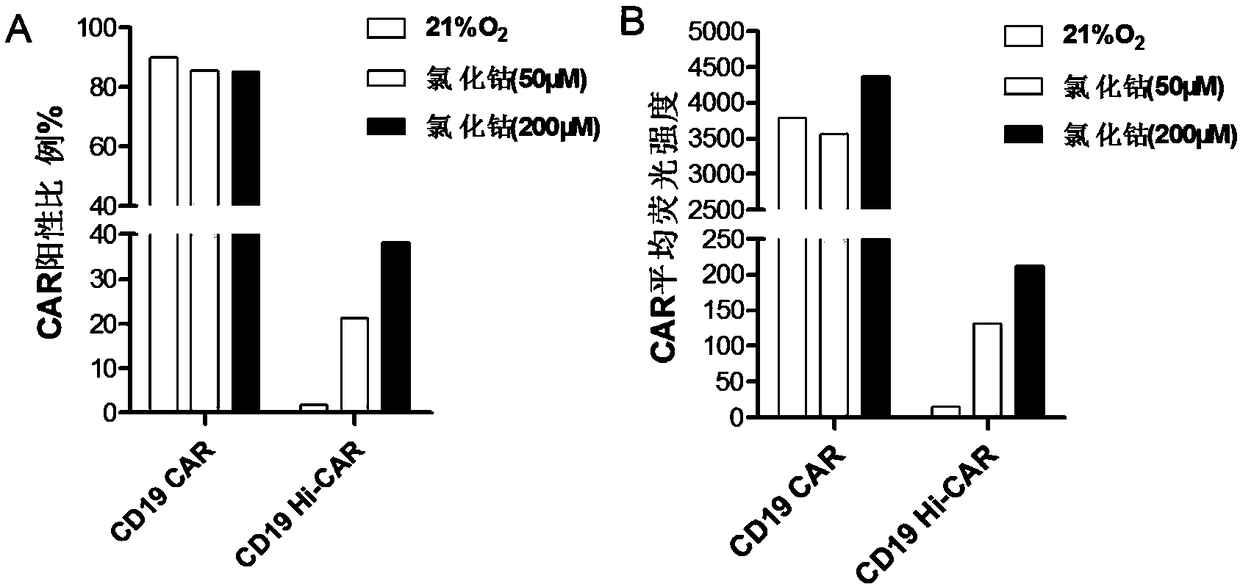Hypoxia-inducible chimeric antigen receptor capable of achieving specific activation of tumor microenvironment
A chimeric antigen receptor and tumor microenvironment technology, applied in the field of biomedicine, can solve the problems of inflammatory factors storming the central nervous system, toxicity, side effects, etc., and achieve the effect of delaying the progress of the disease
- Summary
- Abstract
- Description
- Claims
- Application Information
AI Technical Summary
Problems solved by technology
Method used
Image
Examples
Embodiment 1
[0052] Example 1 Hypoxia-inducible chimeric antigen receptor construct specifically activated by tumor microenvironment and its mode of action
[0053] The present invention provides a hypoxia-inducible chimeric antigen receptor (Hi-CAR) specifically activated by the tumor microenvironment, which includes two components, the first component sequentially includes a signal peptide, an extracellular antigen-specific binding domain, Extracellular spacer domain, transmembrane domain, co-stimulatory signaling domain and intracellular signaling domain, the second component is the oxygen-dependent degradation domain (ODD), wherein the oxygen-dependent degradation domain is taken from Hypoxia-inducible factor 1α (HIF-1α), its amino acid sequence is SEQ ID No: 1, or its sequence homology is at least 80% of SEQ ID No: 1, and its 23rd position is proline and 185th position is proline.
[0054] The Hi-CAR specifically activated by the tumor microenvironment, under normal tissue aerobic en...
Embodiment 2
[0067] Example 2 Screening and Identification of Oxygen-Dependent Degradation Domain (ODD)
[0068] 1. Synthesis of mCherry, mCherry-ODD (N-ter, 1-112), mCherry-ODD (C-ter, 113-224) and mCherry-ODD (1-224) genes by Shanghai Jierui Bioengineering Co., Ltd. , the nucleotide sequences of which are respectively SEQ ID No: 12, SEQ ID No: 13, SEQ ID No: 14 and SEQ ID No: 15. The synthesized gene was cloned into the lentiviral expression plasmid pHAGE-EF-1α-MCS-IRES-ZsGreen to obtain the following four recombinant lentiviral expression plasmids, pHAGE-mCherry, pHAGE-mCherry-ODD (N-ter , 1-112), pHAGE-mCherry-ODD (C-ter, 113-224) and pHAGE-mCherry-ODD (1-224);
[0069] 2. Transfect the prepared recombinant lentiviral plasmid together with the lentiviral backbone plasmid psPAX2 and the envelope plasmid PMD2.G into human embryonic kidney HEK293T cells for lentiviral packaging, collect the viral supernatant after 48 hours, and filter with a 0.45 μM filter. Obtain lentiviral vectors LV-...
Embodiment 3
[0075] Example 3 Changes in CAR of T lymphocyte line CD19 Hi-CAR-Jurkat cells under hypoxic environment
[0076] 1. The CD19 CAR and CD19 Hi-CAR genes were synthesized by Shanghai Jierui Bioengineering Co., Ltd. The nucleotide sequences are SEQ ID No: 17 and SEQ ID No: 18 respectively, and the synthesized genes were cloned into lentivirus Expression plasmid pHAGE-EF-1α-MCS-IRES-ZsGreen to obtain the following two recombinant lentiviral plasmids, namely pHAGE-CD19 CAR and pHAGE-CD19 Hi-CAR;
[0077] 2. Transfect the prepared recombinant lentiviral plasmid, lentiviral backbone plasmid psPAX2, and envelope plasmid PMD2.G into human embryonic kidney HEK293T cells for lentiviral packaging, collect the viral supernatant after 48 hours, and filter with a 0.45 μM filter. Obtain lentiviral vectors LV-CD19 CAR and LV-CD19 Hi-CAR, and freeze them at -80°C for future use
[0078] 3. Spread the T lymphocyte line Jurkat E6-1 in a 48-well flat bottom plate, 2×10 per well 5 cells;
[0079]...
PUM
 Login to View More
Login to View More Abstract
Description
Claims
Application Information
 Login to View More
Login to View More - R&D
- Intellectual Property
- Life Sciences
- Materials
- Tech Scout
- Unparalleled Data Quality
- Higher Quality Content
- 60% Fewer Hallucinations
Browse by: Latest US Patents, China's latest patents, Technical Efficacy Thesaurus, Application Domain, Technology Topic, Popular Technical Reports.
© 2025 PatSnap. All rights reserved.Legal|Privacy policy|Modern Slavery Act Transparency Statement|Sitemap|About US| Contact US: help@patsnap.com



